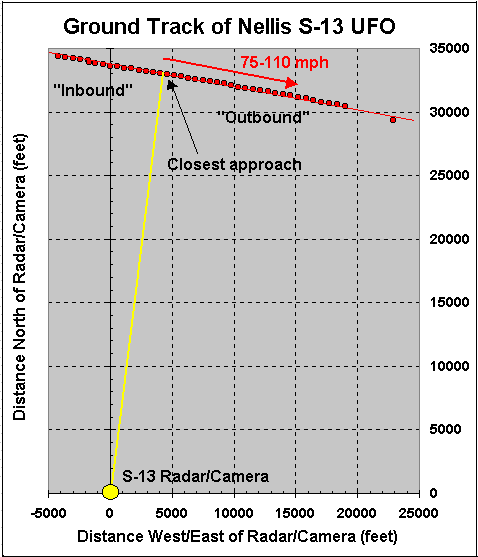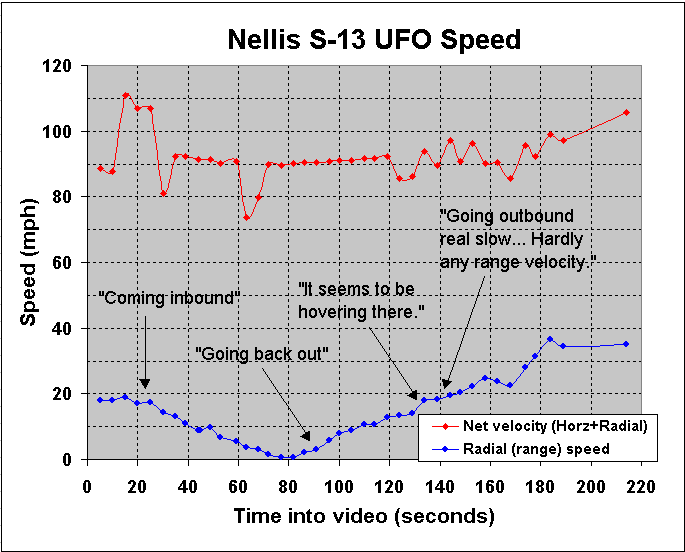Nellis S-13 UFO Graphs
What follows are two graphs showing the trajectory and velocity of the object in the Nellis S-13 video, derived from the radar overlay data. Nothing can be seen of the actual UFO in the video except a small dot.
As can be seen from the trajectory plot, the object was moving sideways to the camera and radar in a straight line. (Altitude--not plotted-- was almost constant at about 11,000 feet with a slight rise.) The velocity plot shows that the typical net speed was 90 miles per hour, most of the time between 80 and 100 mph, and rarely going faster (up to 110 mph) or slower (75 mph). These would be a typical helicopter or small plane speeds, though range operators were unable to identify the aircraft in this very secure and heavily monitored military range. Overall there is nothing unconventional about the motion of this object, the real mystery being why nobody could identify it if it were a conventional aircraft.
Also plotted is the radial or range velocity towards and away from the radar and camera. Transcripts of the range operators conversations has them talking of the object being "inbound" and "outbound", but this is simply an illusion of the trajectory. With a straight-line, sideways trajectory, the object does geometrically come closer, reach a minimum distance, and then get further away, but the object never actually heads towards or away from the radar/camera. This is quite unlike the Nellis S-30 UFO, which initially moves sidways, also at low speed, but then makes a sharp turn and heads almost directly towards the S-30 station at high speed in a complicated trajectory.
Another comment by a range operator that isn't supported by the tracking data is of the object "moving fast" at one point (172 seconds) when it was headed "outbound," and moving much faster than when it was inbound (comment at 184 seconds). However, at most, the total speed may have increased from about 90 mph to 100 mph. The radial velocity away from the camera, only about 30 mph, continues to increase in a smooth fashion with no big jumps, as would be expected for an object moving away on a relatively constant, sideways, straight-line course.
What probably happened is two seconds before the "fast" comment, the overlay shows the camera/radar switching from Automatic ("A") to Manual ("M") tracking, and the optical image then starts to jump around on the screen as if the object was moving quickly. The other operator correctly observed that the object was really "not moving that fast," and previous to this there were comments of the object seeming to "hover" there and was "going outbound real slow" with "hardly any range velocity."

